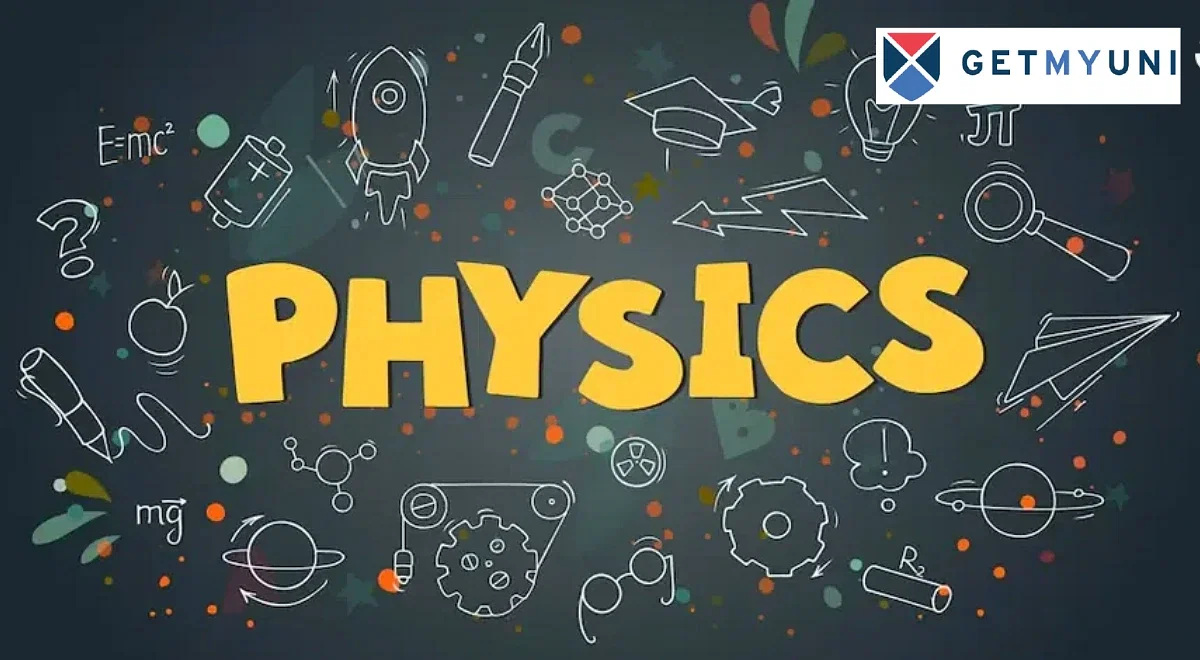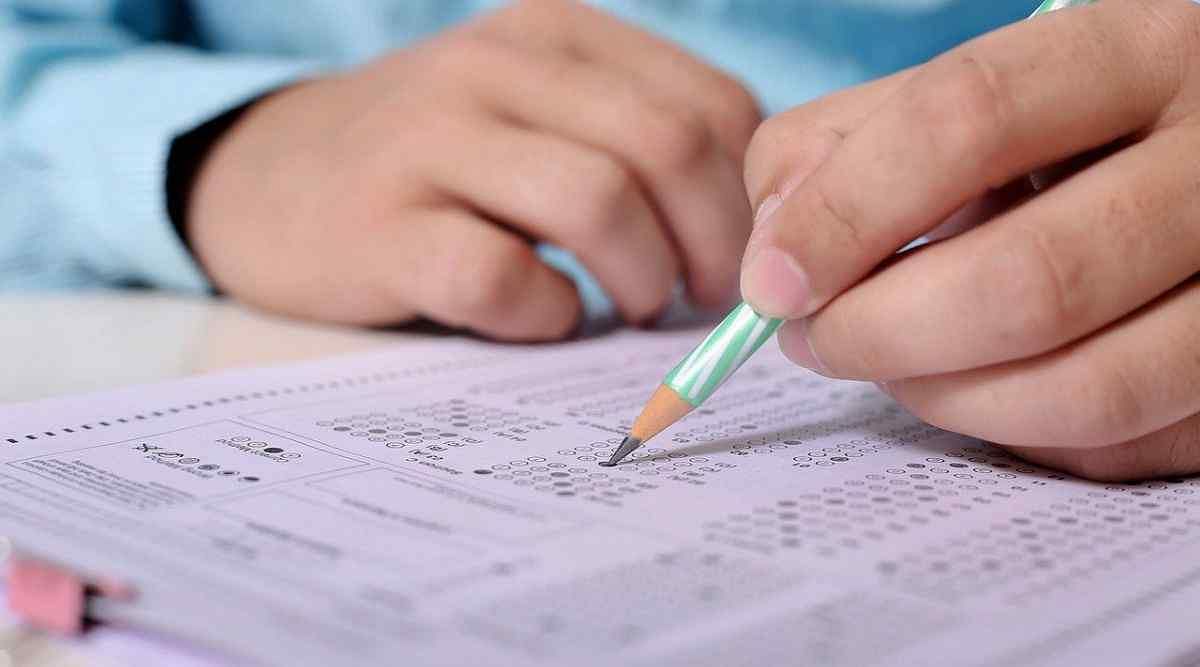The CBSE Class 12 Physics Exam will be conducted for 100 marks including theory exam and practicals. Check here in detail CBSE Physics Class 12 Marks Distribution!
Table of Contents
- CBSE Physics Class 12 Marks Distribution - Overall
- CBSE Physics Class 12 Marks Distribution for Theory Exam
- CBSE Physics Class 12 Marks Distribution for Practical Exam
- CBSE Physics Class 12 Weightage for Theory Exam
- CBSE Physics Class 12 Weightage for Practical Exam
- CBSE Physics Class 12 Question Paper Design
- CBSE Physics Class 12 Question Wise Breakup
- Preparation Tips for CBSE Physics Class 12
The CBSE Physics Class 12 marks distribution has two major components: theory and practical. The CBSE Class 12 Physics Exam will be conducted for 100 marks including both the components. The theory part of the CBSE Class 12 Physics exam will be of 70 marks, and the practical part will be of 30 marks.
Having an idea of CBSE Physics Class 12 marks distribution when studying for the exam will allow students to better arrange their study schedule by dedicating time to each topic, especially high-weightage topics. Unit 5, 6 of the physics syllabus, which comprises topics such as Electromagnetic Waves, Wave Optics, Ray Optics, and Optical Instruments, has the highest weightage (around 18 marks). Check this page to know more about CBSE Physics Class 12 marks distribution in detail!
Also Read: Career Counselling Tips for 12th CBSE Students
CBSE Physics Class 12 Marks Distribution - Overall
The overall marks distribution for Physics class 12 is divided into theory exam for 70 marks and practical exams for 30 marks. Check the detailed distribution below:
1. Theory (External Examination) – 70 Marks
The theory paper is divided into two parts:
- Section A (20 marks): Multiple Choice Questions (MCQs) and Very Short Answer type questions (1 mark each).
- Section B (30 marks): Short Answer type questions (2-3 marks each).
- Section C (20 marks): Long Answer type questions (4-5 marks each).
2. Practical (Internal Assessment) – 30 Marks
- Experiments (16 Marks): Students are required to perform experiments from the list of experiments provided by CBSE.
- Viva Voce (4 Marks): Oral questions based on the experiments.
- Project Work (4 Marks): Presentation and report of the project work.
- Practical File (4 Marks): The record of all practical work done by the student.
CBSE Physics Class 12 Marks Distribution for Theory Exam
CBSE Physics Class 12 Theory exam is conducted for 70 Marks. Understanding Physics Class 12 Marks Distribution is very important for the students as it gives them an idea about exam structure, patterns, weightage assigned to certain topics, and difficulty level associated with it. For example, In the CBSE Physics Class 12 Theory exam, question types such as Analysis, Opinion, Combined questions, Cause & Explanation, Theory Justification & Proof have the highest weightage of 18 marks. Students can check out the details below regarding Physics Class 12 marks distribution.
|
CBSE Physics Class 12 Marks Distribution for Theory Exam |
|
|
Questions Type |
Marks Distribution |
|
Cause & Explanation/ Analysis/ Theory Justification & Proof/ Combined Question & Solution/ Opinion |
18 |
|
Problem Solving Questions |
16 |
|
Terminology Questions/ Facts Question /Conceptual Questions/ Subjective Questions / Demonstrative Questions |
12 |
|
Short Answer Type Questions |
7 |
|
Total Marks |
70 |
Also Read: CBSE Class 12 Physical Education Viva Questions with Answers
CBSE Physics Class 12 Marks Distribution for Practical Exam
CBSE Physics Class 12 Practical exam is conducted for 30 Marks. Students can check out the details below:
|
CBSE Physics Class 12 Marks Distribution for Practicals |
|
|
Task Type |
Marks Distribution |
|
Experiment 1 (Section- 1) |
7 |
|
Experiment 2 (Section- 2) |
7 |
|
Practical Record ([Experiments & activities) |
5 |
|
Activity ( Any Section) |
3 |
|
Investigatory Project |
3 |
|
Viva |
5 |
|
Total Marks |
30 |
CBSE Physics Class 12 Weightage for Theory Exam
Candidates can check from the table below CBSE Physics Class 12 weightage for theory exams:
|
Unit |
Topic |
Weightage |
|
Unit- 1 |
Electrostatics |
16 Marks |
|
Chapter–1: Electric Charges and Fields |
||
|
Chapter–2: Electrostatic Potential and Capacitance |
||
|
Unit - 2 |
Current Electricity |
|
|
Chapter–3: Current Electricity |
||
|
Unit- 3 |
Magnetic Effects of Current and Magnetism |
17 Marks |
|
Chapter–4: Moving Charges and Magnetism |
||
|
Chapter–5: Magnetism and Matter |
||
|
Unit- 4 |
Electromagnetic Induction and Alternating Currents |
|
|
Chapter–6: Electromagnetic Induction |
||
|
Chapter–7: Alternating Current |
||
|
Unit–5 |
Electromagnetic Waves |
18 Marks |
|
Chapter–8: Electromagnetic Waves |
||
|
Unit–6 |
Optics |
|
|
Chapter–9: Ray Optics and Optical Instruments |
||
|
Chapter–10: Wave Optics |
||
|
Unit– 7 |
Dual Nature of Radiation and Matter |
12 Marks |
|
Chapter–11: Dual Nature of Radiation and Matter |
||
|
Unit– 8 |
Atoms and Nuclei |
|
|
Chapter–12: Atoms |
||
|
Chapter–13: Nuclei |
||
|
Unit– 9 |
Electronic Devices |
07 Marks |
|
Chapter–14: Semiconductor Electronic Devices, Materials, and Simple Circuits |
||
|
Total |
70 Marks |
|
Also Read: CBSE 12th Physics Practical Question Papers
CBSE Physics Class 12 Weightage for Practical Exam
Candidates can check the CBSE Physics Class 12 Weightage for the practical exam in the table below:
|
Topic |
Marks |
|
Two experiments one from each section |
7 Marks + 7 Marks |
|
Practical record (Activities and Experiments) |
5 Marks |
|
Viva on project, experiments, and activities |
5 Marks |
|
One activity from any section |
3 Marks |
|
Investigatory Project |
3 Marks |
|
Total |
30 marks |
CBSE Physics Class 12 Question Paper Design
|
S.No |
Question Types |
Very Short Answers (VSA) (1 Mark) |
Short Answers - 1 (SA - I) (2 Marks) |
Short Answers - 2 (SA - II) (3 Marks) |
Long Answer (LA) (5 Marks) |
Total Marks |
% Weightage |
|
1 |
Remembering - (Knowledge based simple recall questions, to know specific facts, principals terms, concepts, or theories, define, identify, or recite, information) |
2 |
1 |
1 |
7 |
10% |
|
|
2 |
Understanding - (Comprehension - to be familiar with meaning and to understand conceptually, interpret, compare, contrast, explain, paraphrase info) |
2 |
4 |
1 |
21 |
30% |
|
|
3 |
Application - (Use abstract info in concrete situation, to apply knowledge to new situations, use given content to interpret a situation, provide an eg or solve a problem) |
2 |
4 |
1 |
21 |
30% |
|
|
4 |
High Order Thinking Skills - (Analysis & Synthesis - Classify, contrast, compare or differentiate between different pieces of info, organize or integrate unique pieces of info from a variety of sources) |
2 |
1 |
1 |
10 |
14% |
|
|
5 |
Evaluation - ( Judge, Appraise or justify the value or worth of a decision or outcome or to predict outcomes based on values) |
1 |
2 |
2 |
11 |
16% |
|
|
Total |
5x1 = 5 |
7x2=14 |
12x3=36 |
3x5=15 |
70(27) |
100% |
CBSE Physics Class 12 Question Wise Breakup
|
Question Type |
Marks per Question |
Total No of Questions |
Total Marks |
|
VSA |
1 |
5 |
5 |
|
SA - I |
2 |
7 |
14 |
|
SA - II |
3 |
12 |
36 |
|
LA |
5 |
3 |
15 |
|
Total |
27 |
70 |
Also Read: CBSE 12th Chemistry Practical Question Papers
Preparation Tips for CBSE Physics Class 12
- Students should solve as many past CBSE Physics Class 12th question papers as possible since it will provide them an understanding of the question kinds, patterns, and marks assigned, as well as train them to complete the paper within the time restriction of three hours.
- Make sure to focus on high weightage topics such as Optics, Wave Optics and Electromagnetic Waves which has been allocated 18 marks as per the CBSE Physics Class 12 Syllabus.
- Students should also practice drawing questions either of a graph or an instrument as it will score them easy marks if done properly.
- Students should also make a note of all the key formulas as it can be helpful to solve numerical issues during the exam within a time limit.









![Motilal Nehru National Institute of Technology, [MNNIT] Allahabad](https://media.getmyuni.com/azure/college-image/small/motilal-nehru-national-institute-of-technology-mnnit-allahabad.webp)





























POST YOUR COMMENT